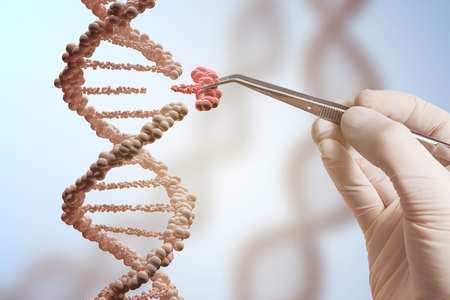For the first time, scientists have successfully genetically modified stem cells in vivo in mice, eliminating the risks associated with extraction, lab alteration, and re-introduction of the cells.
Patients with genetic diseases can be provided with gene therapy to change genetic mutations in mature cells, but unless stem cells are also changed, when the mature cells die, stem cells that carry the genetic mutation would replace them with dysfunctional cells.
In order to alter stem cells they first need to be extracted. They can then be genetically modified in the lab and re-introduced into patients, but that process can be complex, time-consuming, and is not without risk.
When stem cells are extracted, they are taken out of the nourishing environment where they live and as a result they can go into shock and the cells can die. Changes can also occur when the cells are transplanted. As a result, those cells may be rejected when they are reintroduced into the body.
It would therefore be much more beneficial if stem cells could be genetically altered in vivo, without having to remove them. In theory, the process would be quicker, there would be less potential for unwanted changes, and the risks to patients could be reduced.
A team of researchers at Harvard, led by Amy Wagers, has shown that it is possible to genetically modify stem cells in vivo. The researchers used an adeno-associated virus (AAV) which was capable of infecting both mouse and human cells but was not capable of causing disease. The AAV was used as a transport vehicle for delivering a CRISPR-Cas9 gene editing tool into several different types of stem cells and progenitor cells.
To test whether the edits had occurred, the team used a reporter gene which is usually inactive but was turned on when the edit is made. When the gene was activated, the cells turned fluorescent red and could be detected. The greatest success was in skeletal muscle stem cells, where up to 60% of stem cells were successfully modified. In bone marrow, 38% of stem cells were altered, with 27% efficiency in skin progenitor cells. The researchers also found evidence that the altered stem cells were spreading around the body.
While the percentages are relatively low, they are extremely promising, and with refinement it may be possible to increases those percentages further still.
“So far, the concept of delivering healthy genes to stem cells using AAV hasn’t been practical because these cells divide so quickly in living systems – so the delivered genes will be diluted from the cells rapidly,” said researcher Sharif Tabebordbar. “Our study demonstrates that we can permanently modify the genome of stem cells, and therefore their progenies, in their normal anatomical niche. There is a lot of potential to take this approach forward and develop more durable therapies for different forms of genetic diseases.”
Further information can be found in the paper – In Situ Modification of Tissue Stem and Progenitor Cell Genomes – which was recently published in the journal Cell Reports. DOI: 10.1016/j.celrep.2019.03.105
